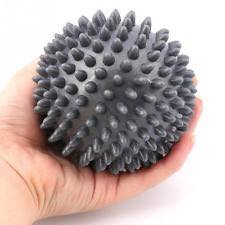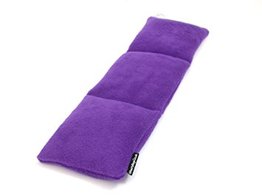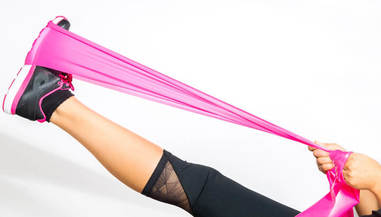|
Many therapists want you coming back time and time again forever. Not me! If there's something I can get you doing at home to help, I let you know. That's why I stock a few of my favourite at-home care tools in the clinic. By using these, you can help to take care of your own muscles each and every day. The Best At-Home Care Tools The tool: Spiky ball If you've been into my clinic room, you've seen these scary-looking little balls hiding in the corner! But they are actually my number one favourite tool for my clients – and myself. What's it for: It might look like a torture device, but it's actually sweet relief for many. For any niggly spots or trigger points, this colourful ball is the key to relieving tension. How to use it: Grab your ball. Use it to roll over a sore muscle until you feel a point of tension or a trigger point. Then, keep rolling on that spot until you feel your muscle relax. Note: This should feel tender, but not like agony! If it's too sore, ease up a bit. Try rolling it over a clothed area if its too tender straight onto skin. The tool: Foam roller Everybody's least favourite post-exercise tool - the foam roller! If you go to the gym, they may already have a few of these laying around, otherwise they are usually cheap to buy from sports stores, or even Kmart! What's it for: The foam roller can be used in a similar way to the spiky ball, but its a broader area. Think big muscle groups, like hamstrings, quads, glutes and backs. How to use it: Time to get down on the floor and roll out those sore muscles. You can roll in one long movement, for example from your knee to your hip, or you can roll in sections. Just like the ball, when you find that tender spot stop there and let the pressure release the muscle for about 20 seconds or until you feel it relax. Note: Foam rollers come in a heap of designs - if you're very pain sensitive, choose a roller that doesn't have any bumps or grooves on it. A smoother roller can be just as effective and much less painful. The tool: Heat pack There's something magically comforting about a heat pack on a cold night. But these aren't just about comfort – they can also be therapeutic. What's it for: The idea of a heat pack is to increase circulation to an area. This might be good for areas of poor circulation, or to help warm up a tight, cold muscle. It's generally recommended for chronic muscle pain and sore joints. How to use it: Heat in a microwave for 1-2 minutes (check the label for guidance). Place on the area that needs a little TLC. Make sure it's a comfortable temperature. And then – relax! Note: You should be careful if you have nerve impairment, as there is a risk of burning. Do not use it within the first 48hrs of an injury unless instructed by your practitioner. The tool: Resistance band
Getting the 80s vibe from these bad boys is pretty common! But don't fear, you don't need to don the lycra to benefit from them. What's it for: You don't need bulky weights to build muscle. Resistance bands can help you to build and maintain muscle strength gently. This is great for people who are rehabilitating joints or are just beginning with strength building. How to use it: It depends on the exercise you need to do. The general idea is to find a way to make the band gently resist your body movement. If you don't have set movements prescribed, I can teach you an easy at-home exercise routine personalised to your needs. Note: There are different levels of resistance available. So if you're not sure what level is right to you, let me know. You can even have a quick try and see what feels right! Do these sound like tools you need to try? The next time you come in for an appointment, you can pick one – or more – up! If you're still not sure which is best for you, send me a message and we can chat further. Comments are closed.
|
Meet Our Team
We have a team of great practitioners available 7 days a week at our Rowville clinic. Archives
July 2024
Categories
All
|
Got a question about Myotherapy?
Contact Mel by phone, email or Facebook
|
Simple Wellness Myotherapy & Remedial Massage Clinic
Shop 12B 150 Kelletts Rd Rowville VIC 3178 |
Phone us on
03 8204 0970 |





 RSS Feed
RSS Feed